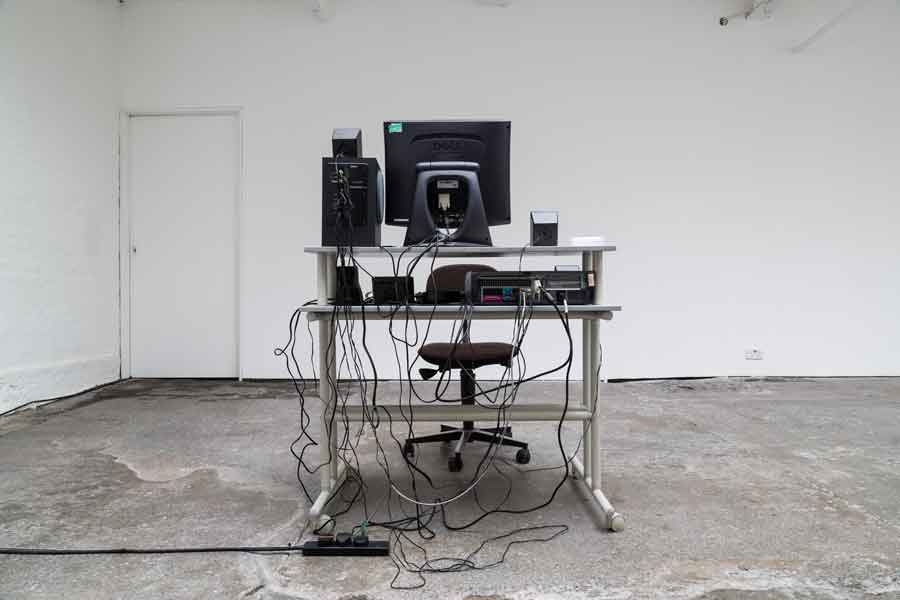Visitors to Morag Keil’s show Potpourri at London’s Cubitt Gallery last year encountered an Internet-based setup leagues away from the technocratic boosterism that’s reshaped our society over the last decade. An unglamorous black Dell PC sat on an office workstation, streaming the Scottish artist’s eponymous seven-minute 2013 film (the website’s URL on a stack of cheap business cards). Here, as footage alternated between a man and a woman pottering around their flats and paparazzi-style footage of zooming motorcycles, a collaged soundtrack was recited by multiple speakers, including message-board comments, N-Dubz’s Tulisa commenting on feeling victimised after her sex tape was leaked, someone lauding Marilyn Manson and a woman talking about how selling images to (presumably adult) websites necessitates sexualising yourself in conventional ways in search of likes – “it’s a trap. The choice is just whether or not you want to make money” – and how, dismayingly, it’s not the industry’s mechanics that are demonised but the girls themselves.
Keil’s work has repeatedly addressed the illusory freedoms of laptop-enabled self-employment and online life in general, whether you’re a knowledge worker, a celebrity or a Heat reader. Existence under these terms as well as in the wider, capitalism-driven world is an ongoing tussle enacted on multiple fronts – gendered, biopolitical, commercial – suggests a work like Civil War (2012), an audio installation (again using ugly PC speakers, suspended from the ceiling) mixing Peckham street noise, adverts for amusement parks and audio tracks from Tekken 6 (‘…the digital cartoonified noise of a man beating a woman would be a competitive game, entertainment,’ Keil said in an interview with Alex Waters). A hallmark of Keil’s installations, meanwhile, is forlorn shop mannequins, shorthand for a stymied sales pitch.
Relentless definition from outside has been Keil’s wheelhouse since she began, several years ago, making ‘self portrait’ paintings based on found jpegs: the very process of painting presented as performative identification. The astringent pleasure of her rough-edged art has been its steady expansion of this focus, updating of identity politicking, navigating of our movement online while maintaining corporeality and refusal to believe in artworld exceptionalism. In Reality Bites (2013), for example, as the interviewer’s voice is chopped and screwed, and video footage gets caught in short redundant loops, artists talk about housing issues, the unglamorous fill-in work they do, how the latter is affected by oldfashioned gender roles and how art itself can become a business. Even if Keil didn’t sustain a wrong-footing approach to a medium that itself militates against such a fate for herself, her gadfly temperament would still be evident in her art’s rigorous antievangelism for what the modern world loves most: consumption, the bright digital abyss and the chimera, under these conditions, of You 2.0.
This article originally appeared in the March 2014 issue
